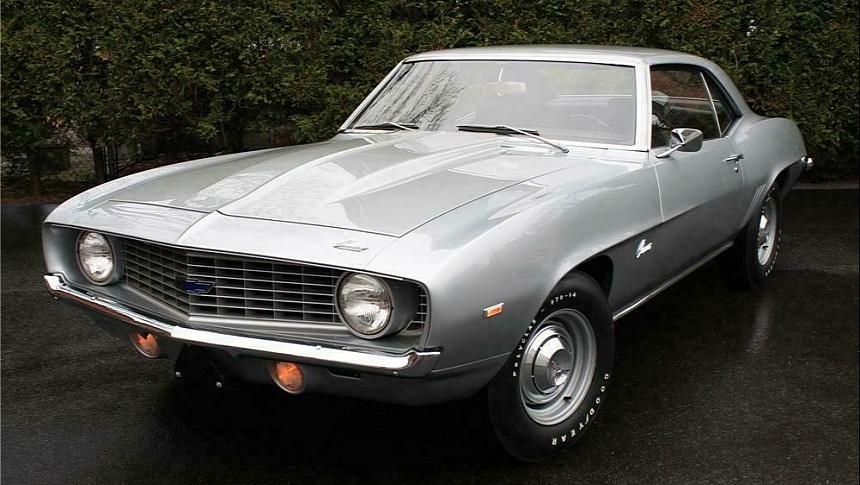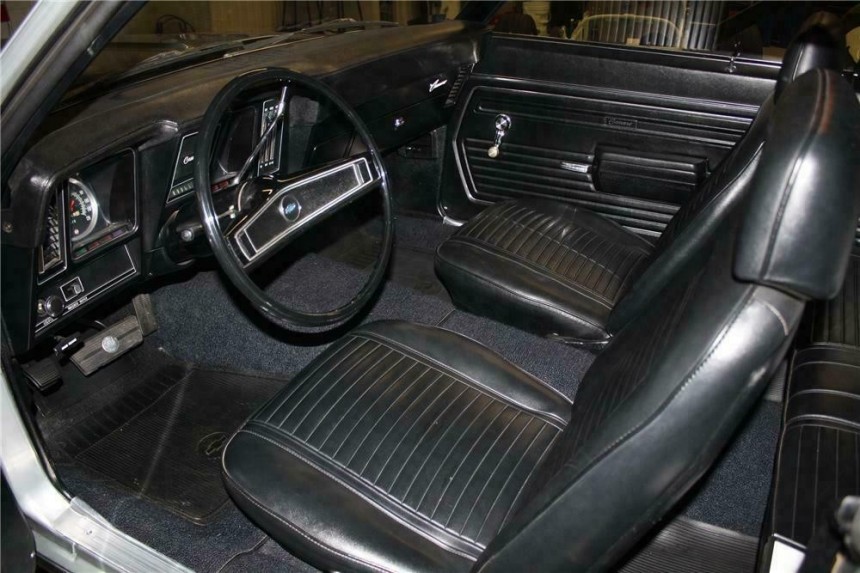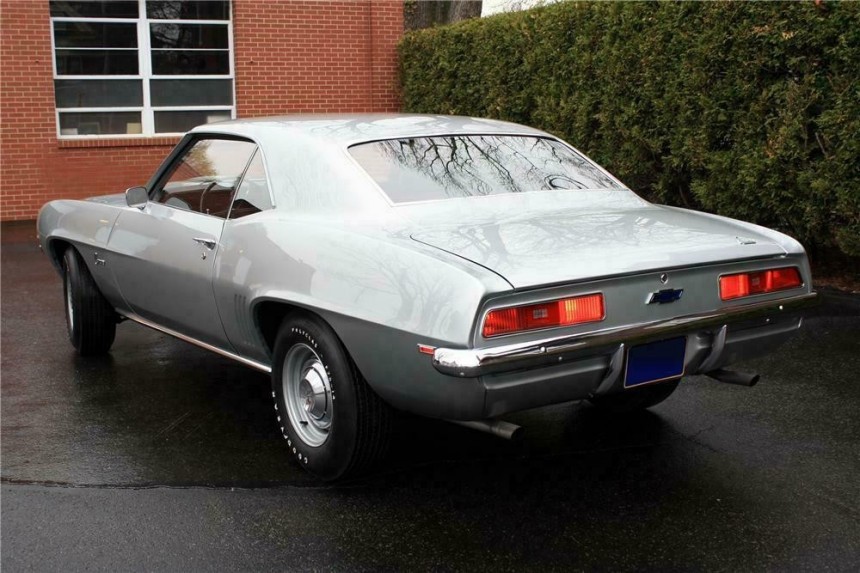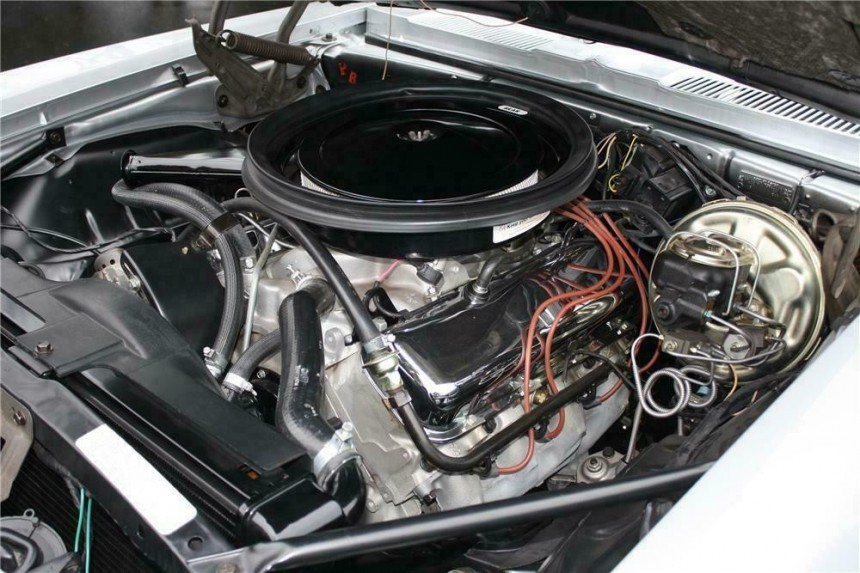There was a time toward the peak of the muscle car age when a street-legal production car from Chevrolet was able to run low tens in the quarter-mile sprint right off the showroom floor. That particular athlete was the famously elusive Camaro ZL1, of which only 69 examples had ever been built. Officially, the car didn’t exist under that nomenclature. Its fame among the piston-addict crowd was built solely on the all-aluminum 427 V8 that the Corvette inherited from GM’s involvement in the racing program.
The most iconic Camaro of all time spawned as the ultimate expression of how racing technology was transferred to road cars. However, there’s a big catch: beginning in 1963, GM axed all its divisions from direct involvement in racing. Additionally, it forbade the production installation of engines above 400 cubic inches (6.6 liters) in any passenger vehicle smaller than ‘full-size’ (the Corvette was exempted).
Naturally, ‘Win on Sunday, sell on Monday’ became a paradox: you don’t ‘Win’ if you don’t ‘Race’ first. The wise guys at Chevrolet retaliated by offering engineering assistance and parts to Can-Am race teams. That’s how their notorious 427 cubic-incher (7.0-liter) V8 was born. Since the cast-iron big-block would have been too heavy for competition purposes, it was carved out of aluminum instead. By 1968, it was ready for the street, and one Chevrolet dealer with a knack for high performance, Fred Gibb from La Harpe, Illinois, ordered 50 cars on the spot for the 1969 drag-racing season.
A former quarter-mile runner himself, Gibb placed the request via the Central Office Production Order so he could get the cars in time to homologate them for the 1969 season. The famous COPO code was 9560, and Gibb firmly believed he had struck gold. After all, at 430 hp (431 PS), it was the most powerful street car Detroit had released up until that time, bar none. Unfortunately for the Illinois dealer, it turned out it was fools’ gold he planted his COPO pickaxe in.
When the cars were initially ordered, Gibbs received strong but only verbal assurance that the price for the ‘4560’ option would roam around the $2,000 range. Under that metric, the raging Camaro with the ZL1 engine in it would have reached $4,300. As it turned out, General Motors bean counters blew it, deciding that the new method of cost-effectiveness in automotive making was to spread the optional extras’ prices within the production costs of a specific model.
What this meant for the roaring Chevy was that, instead of dissipating the costs evenly throughout the entire Camaro production, the burden was laid on the ‘4560’ series only. The red-hot Camaro, with its limited series of 50 units, fell flat on its face on the wrong side of the bed. The engine alone was $4,160, and the overall retail price of the car rose well above $7,300. In 1969! Even the Corvette would get a stiff neck from looking up at that amount.
Accordingly, the cars didn’t sell well, despite other dealers learning about the new COPO code and filling in 19 additional forms. Fred Gibbs only sold 13 out of the 50-unit batch he originally asked for, and Chevrolet redistributed the rest to other dealers. Even so, it wasn’t meant to be, and the super-fast Camaro option was canceled at the end of 1969.
That year, Detroit was generous with alternatives: the Bosses from Ford were far more affordable. The 429 retailed for around $4,800 – about as much as the ZL1 engine with the mandatory $322 four-speed manual transmission and other equipment included in the COPO 4560.
The Charger from across the street also upped the ante with its Daytona and 500 specials, putting the HEMIs on the table. The American Motors Corporation AMXs were drawing swords, and all of the above had far buyer-friendlier price tags.
Chevrolet didn’t advertise the super-quick option – it struggled to meet the 69-strong demand from the few dealers that learned about it – and it never officially released any specs for the ZL1s. After getting the bigger picture about the car’s monumental sales flop, drastic measures were taken to get at least some of the money back. Some were stripped of the aluminum engines, refitted with cast iron 427s or 396s, and sold.
The race-derived units were sold separately whenever an occasional buyer suddenly developed a severe case of money allergy and coughed up the four large. With their rarity putting them high above almost anything else from that era, today’s prices for one of those extra-special Chevys are about as high as their horsepower ratings.
If you find that half a million bucks is too much of a burden for your wallet, place a bid on this example below. It is the ninth car out of the initial batch of fifty produced under Gibb’s special order, and it was raced by Dick Harrel in 1970.
Following its restoration, Ed Cuneen from COPO Connection certified this ZL1 as ‘one of the finest examples of the marque in existence.’ It is also for sale, offered at no reserve at the Scottsdale 2024 auction next January. For reference, the same car was sold at the 35th Scottsdale Anniversary in 2006 for just under $500,000. It changed hands again in 2012 at the same Arizona auction for a more modest $451,000.
Naturally, ‘Win on Sunday, sell on Monday’ became a paradox: you don’t ‘Win’ if you don’t ‘Race’ first. The wise guys at Chevrolet retaliated by offering engineering assistance and parts to Can-Am race teams. That’s how their notorious 427 cubic-incher (7.0-liter) V8 was born. Since the cast-iron big-block would have been too heavy for competition purposes, it was carved out of aluminum instead. By 1968, it was ready for the street, and one Chevrolet dealer with a knack for high performance, Fred Gibb from La Harpe, Illinois, ordered 50 cars on the spot for the 1969 drag-racing season.
A former quarter-mile runner himself, Gibb placed the request via the Central Office Production Order so he could get the cars in time to homologate them for the 1969 season. The famous COPO code was 9560, and Gibb firmly believed he had struck gold. After all, at 430 hp (431 PS), it was the most powerful street car Detroit had released up until that time, bar none. Unfortunately for the Illinois dealer, it turned out it was fools’ gold he planted his COPO pickaxe in.
What this meant for the roaring Chevy was that, instead of dissipating the costs evenly throughout the entire Camaro production, the burden was laid on the ‘4560’ series only. The red-hot Camaro, with its limited series of 50 units, fell flat on its face on the wrong side of the bed. The engine alone was $4,160, and the overall retail price of the car rose well above $7,300. In 1969! Even the Corvette would get a stiff neck from looking up at that amount.
Accordingly, the cars didn’t sell well, despite other dealers learning about the new COPO code and filling in 19 additional forms. Fred Gibbs only sold 13 out of the 50-unit batch he originally asked for, and Chevrolet redistributed the rest to other dealers. Even so, it wasn’t meant to be, and the super-fast Camaro option was canceled at the end of 1969.
The Charger from across the street also upped the ante with its Daytona and 500 specials, putting the HEMIs on the table. The American Motors Corporation AMXs were drawing swords, and all of the above had far buyer-friendlier price tags.
Chevrolet didn’t advertise the super-quick option – it struggled to meet the 69-strong demand from the few dealers that learned about it – and it never officially released any specs for the ZL1s. After getting the bigger picture about the car’s monumental sales flop, drastic measures were taken to get at least some of the money back. Some were stripped of the aluminum engines, refitted with cast iron 427s or 396s, and sold.
If you find that half a million bucks is too much of a burden for your wallet, place a bid on this example below. It is the ninth car out of the initial batch of fifty produced under Gibb’s special order, and it was raced by Dick Harrel in 1970.
Following its restoration, Ed Cuneen from COPO Connection certified this ZL1 as ‘one of the finest examples of the marque in existence.’ It is also for sale, offered at no reserve at the Scottsdale 2024 auction next January. For reference, the same car was sold at the 35th Scottsdale Anniversary in 2006 for just under $500,000. It changed hands again in 2012 at the same Arizona auction for a more modest $451,000.

















